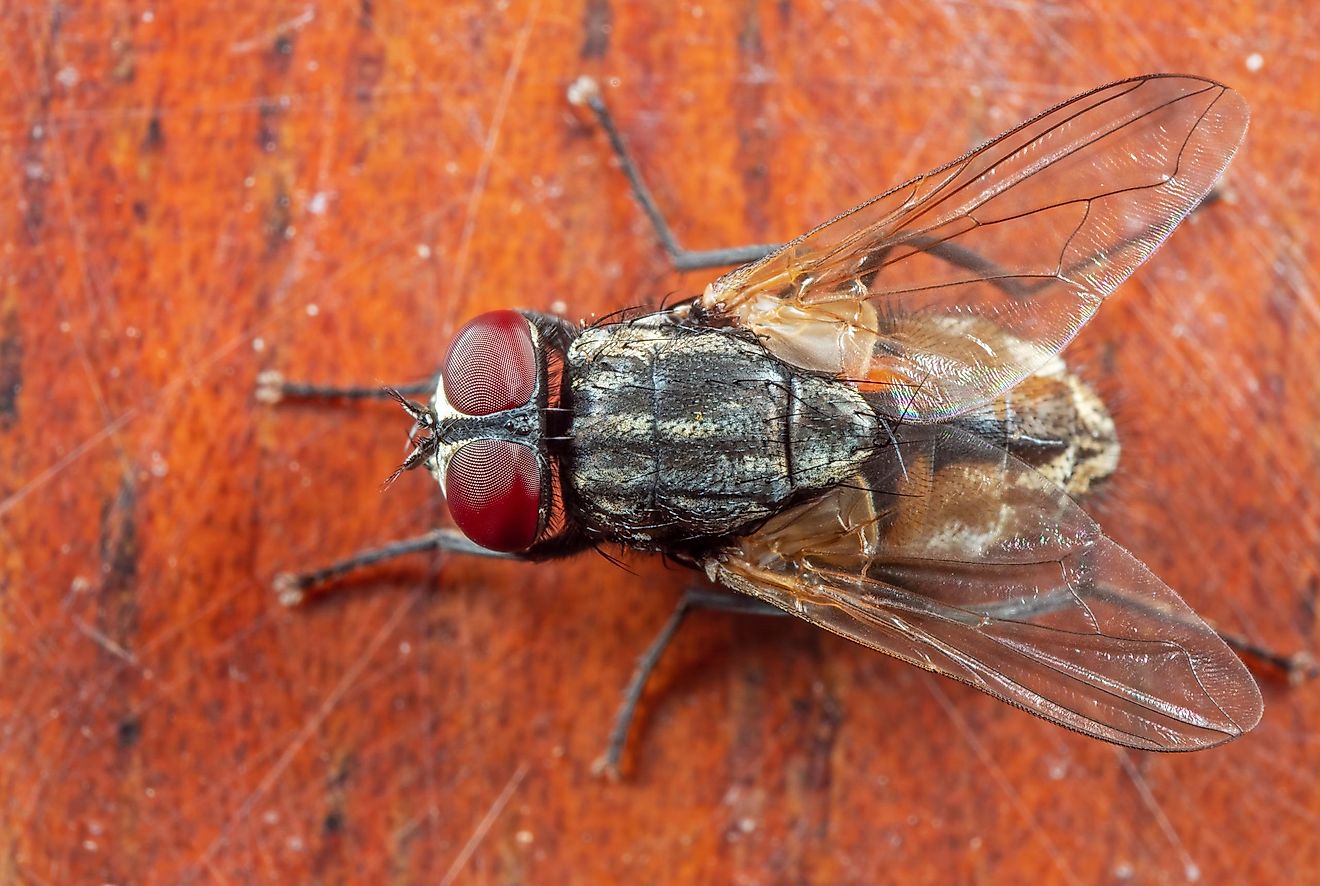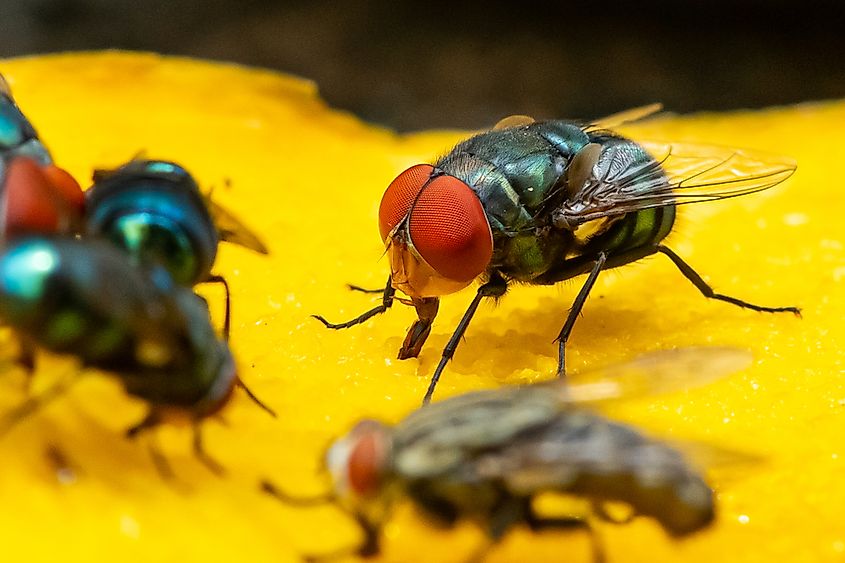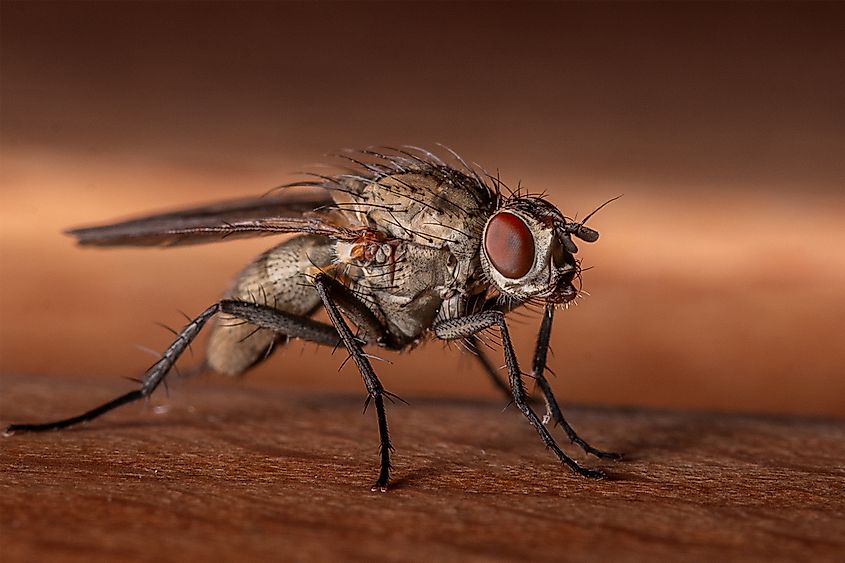How Long Do House Flies Live?

- A female housefly typically produces anywhere from a 100 to 150 eggs per batch.
- Even though they do not live very long, they can represent a serious annoyance to humans as well as help spread particular diseases.
- During World War II, houseflies were deliberately coated with cholera-causing bacteria, placed inside bombs and used to kill thousands of people in China.
The housefly is the most common fly species. The adult houseflies have hairy bodies, one pair of wings, and are usually either grey or black in color. Their eyes are red, and females are generally a bit larger than males. Houseflies mate once, and the female then stores the sperm so she can use it later. She lays her eggs on rotting organic substances such as feces or food waste. She usually lays around 100 to 150 eggs in a single batch.
Adult houseflies live anywhere from 2 to 4 weeks and are considered pests not only because they can physically annoy people, but also because they can transfer certain diseases.
Life Cycle Of Houseflies
Once the female lays her batch of around 150 eggs, the life cycle of a housefly can begin. She can lay up to six batches of eggs for several days. The eggs are laid on decomposing organic substances, mostly in dark and damp places. After one day, the eggs hatch. They hatch into larvae, commonly referred to as maggots. Maggots are white, have no legs, and they remain on the place where the eggs have been laid for up to five days.

During those five days, maggots feed, and they shed their exoskeleton several times. After that, they find a dark, moist, and warm place where they pupate. Their pupae function and look like butterfly cocoons. They protect the flies while they are developing. At warmer temperatures, the development process is completed in two to six days. The adult housefly then tears its pupal case open and emerges outside. It can live anywhere from two weeks to a month.
Houseflies Vs Humans
Houseflies are known to be a significant disturbance to humans in many aspects of everyday life. They are mostly disliked because they are known to contaminate food. They breed in a large variety of unclean places and afterward try to feed on human foods. When they do so, they deposit their feces and saliva into the food, which can be dangerous. On the other hand, a housefly larvae can be useful. They have been used in ancient times as a medicine and can be nutritious as fish food.
When they fly between breeding places, houseflies can fly through several miles. During that time, they can carry many organisms and bacteria on their hairs, some of which can cause diseases. They do not serve as a host to diseases themselves, but they carry the pathogens that cause serious illnesses. Some of those are tuberculosis, typhoid, cholera, and anthrax. This is why they can cause a problem if they appear in hospitals.

Usage And Control Of Houseflies
During World War II, houseflies were used as a weapon. They were coated with bacteria that caused cholera and placed inside bombs that were dropped on China, killing a large number of people.
Houseflies can be controlled, physically, biologically or chemically. If we were to control them by physical means, we could do so by using strips of plastic in our doorways, which can prevent them from entering. Another way of doing that is by using electrical fans. We can also limit their breeding possibilities by taking better care of our garbage. Scientists have tried biologically controlling houseflies by introducing other species that would compete with them for resources. And finally, the chemical way of dealing with houseflies is by using insecticides.











